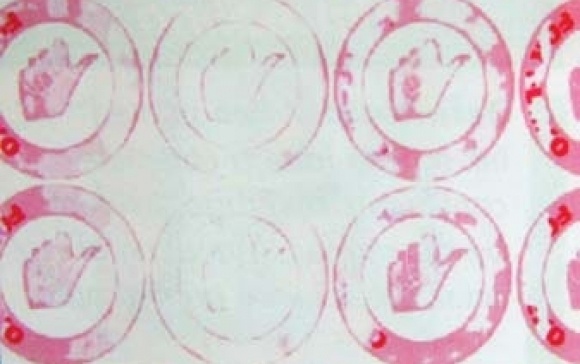Share this
Flexo Printing Defects: ‘Skip Out’ a Matter of Poor Ink Transfer
by Luminite on Jun 16, 2020 10:00:00 AM
Is your substrate coming off the press with prints that are either too light or entirely missing in sections? That’s what we in the business call skip out, very common among flexo printing defects.
Skip out is a simple question of poor ink transfer with a variety of paths to solutions. Poor ink transfer could be the result of multiple defects involving:
- Press mechanics
- Surface tension and surface energy
- Pressure
- Ink viscosity and pH
- Maintenance and cleaning
So let’s begin troubleshooting.
Poor Ink Transfer Causes Skip Out
Let’s start with common sense: You need your ink to wet out completely on the substrate.
No matter the substrate, press mechanics play a critical role in getting the job done right.
Press Mechanics
High printing speeds in today’s flexographic printing industry make it impossible not to consider the importance of accurately balancing rollers and cylinders housing the image carrier, web, and substrate. Balancing distributes the roller’s mass, which avoids the following issues that could skew your imagery:
- Wobbling
- Resonant vibrations
- Excessive plate or cylinder wear
Drive systems, which are intended to pull the web evenly through the press and its rollers, must be calibrated to achieve a constant speed and even pressure to ensure the substrate uniformly contacts the image carrier. Worn-out bearings and gears can also cause unwanted side-to-side or up-and-down movement across or away from the web.
Poor contact equals poor ink transfer.
Surface Tension and Surface Energy
Flexo surface tension and surface energy affect wettability. Proper wetting of the substrate depends on the surface tension of the ink, surface tension of the image carrier, and surface energy of the substrate.
- Surface tension, which is expressed in dynes/cm, is the tendency of liquids to act in open air as if they’re surrounded by an elastic barrier. Think of this like beads of water forming on a freshly waxed vehicle. Incorrect ink surface tensions can prevent the ink from transferring and adhering to the substrate.
- Surface energy, which is measured in joules/sq. meter, is a similar concept that’s applied to solids. It is the excess energy at the surface of a material compared to its bulk.
- The ink must have a low enough surface tension compared to the image carrier so the ink can adhere to it. In turn, the substrate must have a higher surface energy to fully pull the ink off the image carrier.
Pressure
Pressure applies ink from your printing plates or sleeves as they contact the substrate. Not enough pressure or not enough ink results in a faded or barely visible print. However, on the opposite side of the spectrum, too much pressure can causes the ink to extend beyond the edges of the print area, a printing defect commonly known as feathering.
The best way to avoid pressure-related defects is to ensure pressure is constant and uniform across the web.
Ink Viscosity and pH
Carefully controlling ink viscosity for solvent-based inks and pH level for water-based inks should yield exceptional flexo prints.
Temperature and viscosity are interlinked. Water-based inks rely on controlling pH levels to maintain the solubility and stability of the resins and solvents within. Automated systems can now control these important variables.
Maintenance and Cleaning
Show your flexo sleeves, plates, and cylinders some TLC. Seriously, they need it. Maintaining and cleaning them will not only extend their useful lives, but will also help ensure quality prints.
Use cleaning chemicals and materials that are non-abrasive and appropriate for the job. Use mild soap and water or industrial alcohol for water-based ink on most elastomer types. Use an appropriate solvent for the following inks:
- Solvent-based
- Oil-based
- UV-based
- EB-based
Cleaning needs to be done immediately after removal from the press. Always use a soft-bristled brush to clean stubborn ink and debris. Let your flexo products air dry, and properly store at least 4 hours later in temperate conditions and away from ozone-emitting appliances.
Troubleshoot Poor Ink Transfer to Avoid Skip Out
Down press time and wasted substrate caused by images skipping out can cost you money. It’s most likely an issue with ink transfer, which could have a variety of causes.
Closely calibrate your equipment and inks to ensure:
- Smooth operation
- Uniform contact of the image carrier across the substrate
- Full wet out and absorption
Still having trouble? Check out our troubleshooting guide below or call us toll free at 1 (888) 545-2270.
Editor's Note: This article was published in February 2018 and has since been updated.
Share this
- Flexographic Printing (81)
- Image Carrier (28)
- Elastomer sleeves (27)
- Ink Transfer (25)
- Quality (22)
- Flexo sleeve (20)
- News (18)
- printing defects (18)
- flexo printing defects (17)
- sustainability (13)
- Flexo Troubleshooting (12)
- Ink (12)
- Digital Printing (10)
- Flexo 101 (10)
- Flexo Inks, (9)
- Anilox (7)
- Blister Packaging (7)
- Cost (6)
- print misregistration (6)
- regulations (6)
- Corrugated Printing (4)
- pinholing (4)
- "Tradeshow (3)
- Digital Flexo (3)
- Gravure Printing (3)
- Insider (3)
- Load-N-Lok (3)
- Wide Web (3)
- direct laser engraving (3)
- flexo-equipment-accessories (3)
- gear marks (3)
- halo (3)
- testing (3)
- Narrow Web (2)
- bridging (2)
- feathering (2)
- filling in (2)
- mottled image (2)
- pressure (2)
- Labelexpo (1)
- dirty prints (1)
- doughnuts (1)
- embossing (1)
- kiss impression (1)
- October 2023 (2)
- September 2023 (1)
- August 2023 (1)
- July 2023 (3)
- June 2023 (1)
- May 2023 (5)
- April 2023 (1)
- March 2023 (2)
- February 2023 (1)
- January 2023 (3)
- December 2022 (1)
- October 2022 (3)
- September 2022 (2)
- August 2022 (2)
- July 2022 (3)
- May 2022 (1)
- April 2022 (4)
- March 2022 (2)
- February 2022 (5)
- January 2022 (7)
- December 2021 (1)
- November 2021 (3)
- October 2021 (2)
- September 2021 (1)
- August 2021 (1)
- July 2021 (3)
- June 2021 (1)
- May 2021 (4)
- April 2021 (4)
- March 2021 (4)
- February 2021 (2)
- December 2020 (1)
- November 2020 (1)
- October 2020 (2)
- September 2020 (1)
- August 2020 (3)
- July 2020 (2)
- June 2020 (3)
- May 2020 (1)
- April 2020 (1)
- November 2019 (3)
- October 2019 (1)
- August 2019 (1)
- July 2019 (1)
- April 2019 (1)
- March 2019 (1)
- January 2019 (1)
- October 2018 (2)
- August 2018 (1)
- July 2018 (1)
- June 2018 (1)
- February 2018 (2)
- October 2017 (1)
- September 2017 (2)
- January 2016 (1)
- February 2015 (1)
- January 2015 (1)
- December 2014 (2)
- September 2014 (1)
- February 2014 (1)
- January 2014 (1)
- December 2013 (3)
- October 2013 (1)
- September 2013 (1)
- June 2013 (1)
- January 2013 (1)



Comments (2)